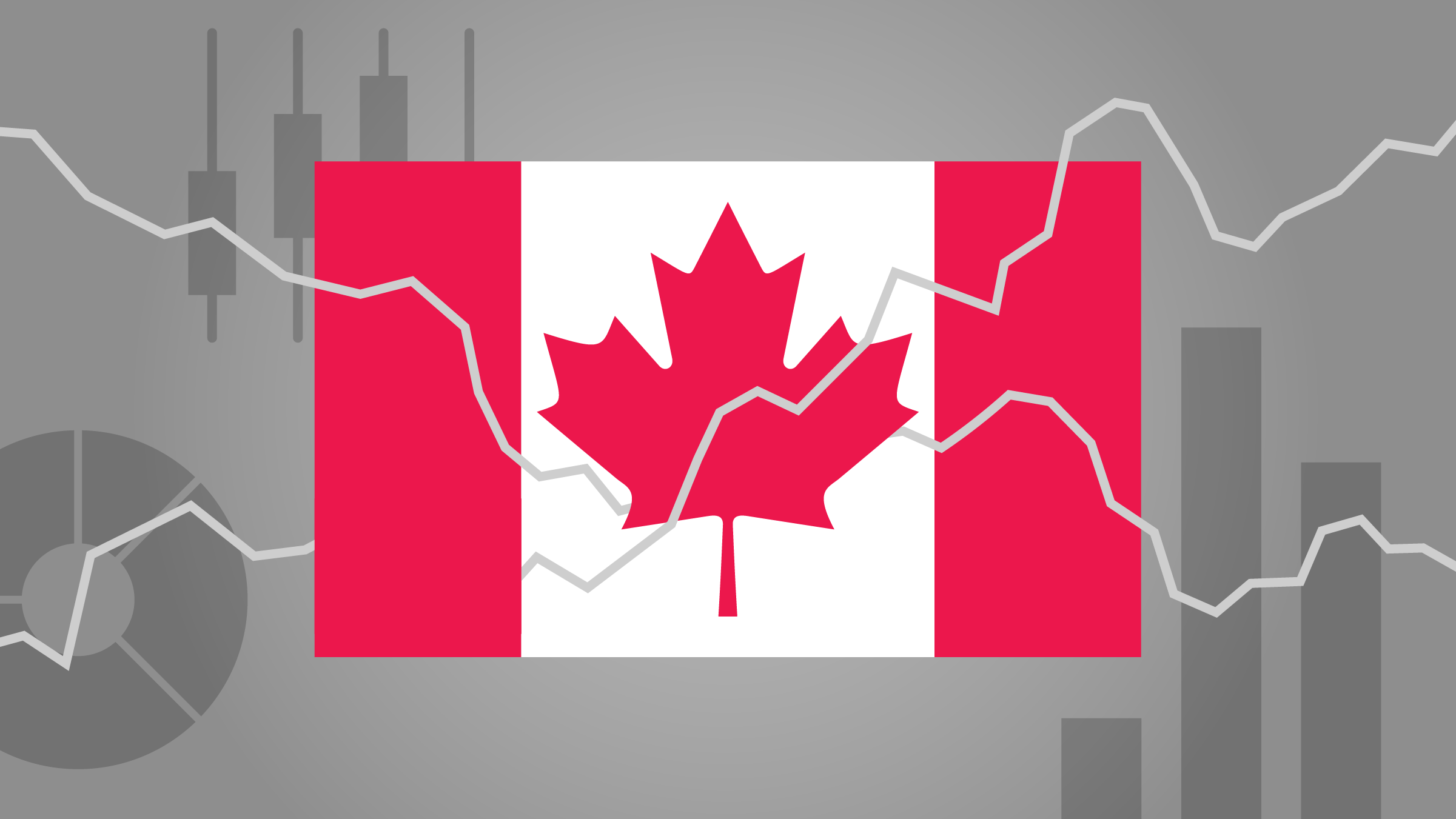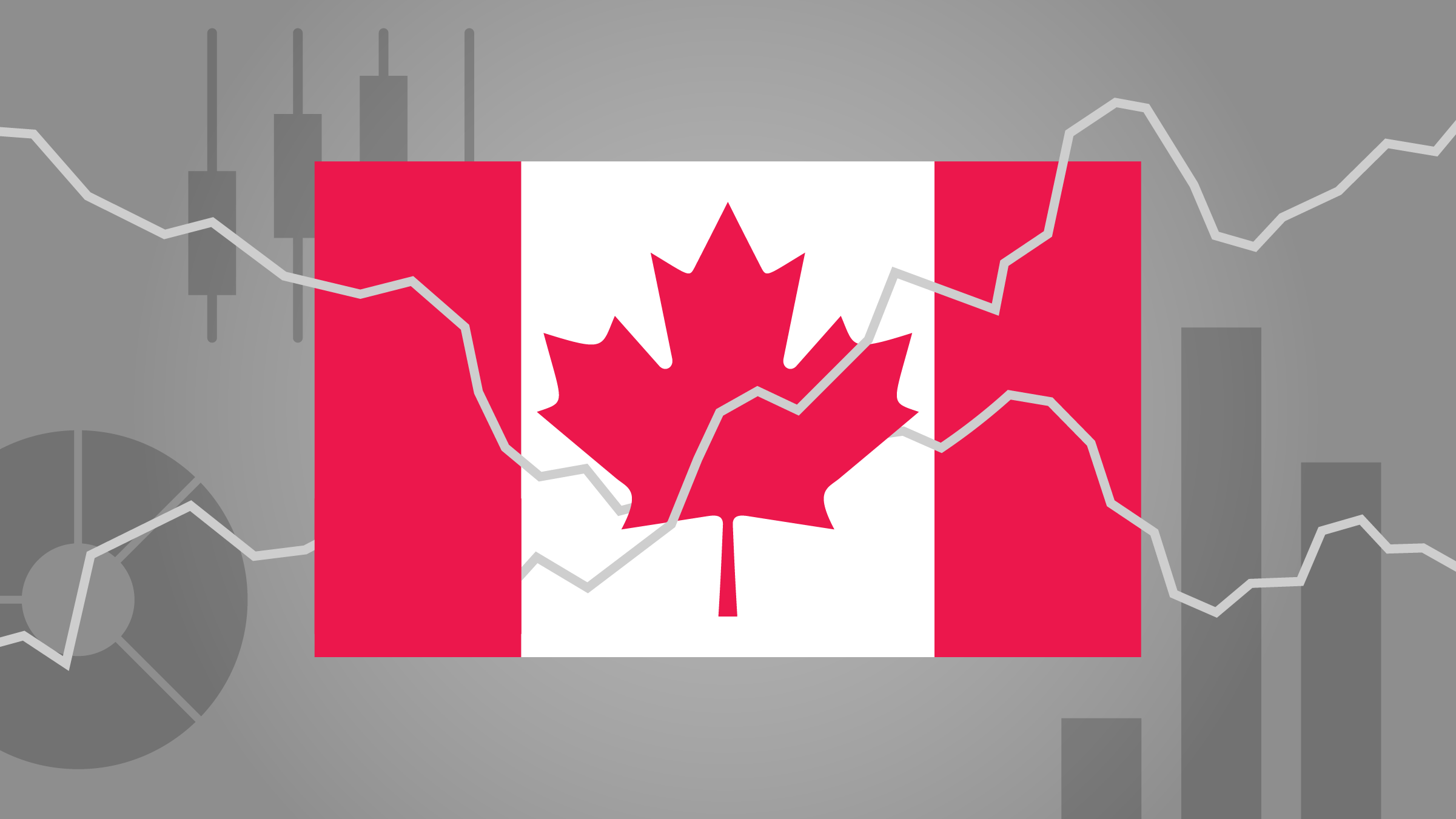
US President Donald Trump has spared Canada from economy-crushing reciprocal tariffs, sharply increasing the chances that the Bank of Canada will hold off on cutting interest rates at its April 16 meeting. While the lack of additional tariffs is a positive for Canada, concerns remain over the 25% automotive tariffs that come into force on Thursday, along with earlier duties on non-USMCA-compliant Canadian exports.
Economists say dodging the most severe tariffs will help contain inflation, potentially allowing the central bank to begin unwinding its easing cycle. The Bank has cut rates at seven consecutive meetings, bringing its policy rate down to 2.75% from a peak of 5.00% last summer.
Here are highlights from analyst commentary on what the tariff decision means for Canada.
Charles St-Arnaud, chief economist at Alberta Central
“While nothing changed on the scope of the US tariffs on Canada, yesterday’s announcement will still be negative for the Canadian economy. USMCA-compliant exports to the US remains at 0%, non-compliant at 25%, non-compliant energy and potash at 10%. The tariff on steel and aluminum remains in place, same for the auto sectors.
“The impact on Canada will be more indirect. The negative shock on the global economy will be significant, which will reduce demand for commodities and reduce their prices. Already, we are seeing oil prices dropping about 7%. The negative terms-of-trade shock will be important for provinces that exports commodities.
“Tariffs on steel, aluminum and the non-USMCA compliant share of autos will have a negative impact on the economy, especially in manufacturing-heavy province of Ontario and Quebec.
“The increased likelihood of a significant global slowdown, maybe a recession, and the increased probability of a recession in the US would have negative spillovers on Canada’s economy. It would lower demand for Canadian goods, especially in the case of a US recession and would add to the drag from tariffs. Moreover, weaker global growth will lower demand for commodities, affecting Canada’s exports of these commodities, and also push commodity prices lower, leading to a negative terms-of-trade shock on Canada.”
Sal Guatieri, senior economist at BMO Capital Markets
“The President’s ‘Liberation Day’ announcement of reciprocal tariffs provides some relief for Canada and Mexico (relative to expectations) but a more challenging situation for most other countries and the US economy itself.
“At the moment, it seems, Canada and Mexico are spared reciprocal tariffs. Both nations will continue to pay duties under the IEEPA order concerning border security issues (fentanyl and migration). That is, 25% on non-USMCA compliant goods and no tariff on USMCA compliant goods (which for Canada could be the vast majority of products once the necessary paperwork is completed). Energy products, critical minerals, and potash from Canada will continue to pay a 10% duty. If these duties are withdrawn, then USMCA compliant goods will continue to pay no duty while non-USMCA compliant goods would pay a 12% reciprocal tariff.
“For Canada, we estimate that the weighted average tariff on shipments to the US could rise by only around 7 percentage points. That’s based on an estimated 12.5% duty on motor vehicles (to reflect US. content, though parts could eventually be a different story), and other sectoral duties. That’s much lighter than assumed in our forecast, suggesting a possible upgrade to the outlook. Still, more tariffs could well be applied to lumber and pharmaceuticals, which would raise the average duty for Canada, so we shall keep our pencils down until the dust settles a bit.”
Bradley Saunders, North America economist at Capital Economics
“Canada has escaped much more lightly than we feared from President Trump’s big announcement, with the import-weighted US tariff likely to be 8% based on current plans and potentially below 5% in the near future. Nonetheless, the current 25% tariff – imposed under the pretense of border security – will remain in place but so will the exemption for USMCA-compliant goods, and the lower 10% tariff rates for energy and potash. Assuming about 80% of exports are USMCA-compliant, this equates to an average tariff of no more than 5%. On top of that, motor vehicles as well as steel and aluminum face 25% tariffs (albeit with an allowance for US content in vehicles), which will each add about 1.5%-point to the average tariff rate. That implies an overall tariff rate of 8% for Canada, but it could soon be lowered.
“While we will revise our forecasts to assume a recession is avoided, the outlook remains gloomy. Consumer and business confidence has plunged and is unlikely to recover overnight simply because tariffs are, for now, relatively low. The larger vehicle tariffs will be hugely disruptive for that sector. Accordingly, consumption and investment will struggle, pushing quarterly GDP growth below 1% annualized in the second half of the year.
“The Bank of Canada’s job now looks easier. Those diminished inflation risks mean we are not minded to change our policy rate forecasts despite the slightly better economic outlook. If GDP growth slows below its potential rate as we expect, then there will still be good reason for the Bank to cut its policy rate below its neutral range estimate, of between 2.25% to 3.25%. Accordingly, we still expect three more 25-basis-point interest rate cuts to take the policy rate to 2.0%, although our thinking now is that those will come at every other meeting rather than sequentially. In other words, the Bank will keep interest rates on hold at its meeting this month.”
Andrew Grantham, senior economist at CIBC Economics
“No news was good news for Canada, but only relative to what some may have feared. Canada and Mexico will be exempt from reciprocal tariffs as long as the existing fentanyl/immigration driven tariffs on non-USMCA compliant goods remains in place. If these tariffs were to cease, Canada (and Mexico) would be subject to a 12% reciprocal tariff on non-USMCA compliant goods. The US has previously stated that in 2024 38% of Canadian exports were USMCA compliant, although we expect that compliance is ramping up rapidly given that companies now have a big financial incentive to make sure the correct paperwork is in place.
“That still leaves Canada subject to higher tariffs on steel, aluminum, autos and lumber. While that might seem like a small list, long-lasting tariffs on those sectors would still leave a sizeable hole in the economy because they are amongst the most vulnerable and dependent on US trade. For the Bank of Canada, we lean towards an April pause after today’s somewhat better than expected outcome. That doesn’t mean the Bank of Canada is necessarily done easing because the tariffs announced today and the uncertainty of renegotiating USMCA with Trump are still going to weigh on the economy and job market. But the Bank of Canada has the luxury of waiting a bit more with an economy that enters this trade war in decent shape and also, to see what the new government in the spring will offer to change the economy’s fortunes and how the government approaches the trade war.”
Royce Mendes, managing director and head of macro strategy at Desjardins Capital Markets
“The big story north of the border is that Canada and Mexico will not yet be subject to the reciprocal tariffs. After being hit hard earlier in the year, Canada and Mexico have seemingly received at least some short term advantages over other trading partners. Should producers in both countries move to make more of their goods USMCA-compliant and the governments work towards resolutions for border frictions, there is scope for Canada and Mexico to take market share from other US trading partners. That reinforces our view that the Bank of Canada will not cut rates later this month unless the market selloff is sustained.
“Despite the reprieve given to the two North American economies, this is a very significant structural shift in policy. The US effective tariff rate could be headed to its highest level in a century. US financial markets are clearly concerned about the magnitude and scope of today’s announcement. Furthermore, there remain unresolved trade irritants with both Canada and Mexico that may be hard to overcome. Markets may, however, cling on to the hope that today’s announcement is just the starting point for bilateral negotiations with individual trading partners and tariff rates will fall if foreign trade barriers decline. Whether or not that theory proves true will be key to the trajectory of markets in the coming weeks.”
Matthieu Arseneau, economist at the National Bank of Canada
“While today’s announcement is undoubtedly bad news for the global economy, Canada and Mexico, as USMCA partners, were largely spared from the new tariff list. Furthermore, tariffs imposed for border security-related issues may eventually be replaced by the 12% reciprocal tariff on non-compliant goods.
“Notably, 40% of Canadian exports are already USMCA-compliant, and this figure could potentially double following the completion of compliance recognition processes. As a result, Canada’s exposure to new tariffs remains relatively limited, primarily affecting steel, aluminum, and the automotive sector.
“For motor vehicles that meet USMCA criteria, a 25% tariff will apply to the value of non-US-produced components, beginning April 3. For automotive parts, tariffs begin May 3. However, USMCA-compliant parts will be exempt until a yet-to-be-announced later date. Given the complexity of North American supply chains, it is uncertain whether this exemption may eventually be revoked.
“However, this short-term relief may be fleeting. The breadth and severity of tariffs imposed on other countries significantly heighten the risk of stagflation in the United States and raise the likelihood of a global economic slowdown or recession.
“Unless the US administration reverses course, the Canadian economy remains on track for a noticeable deceleration throughout the remainder of 2025.”
Claire Fan, senior economist at Royal Bank of Canada
“The long-awaited US reciprocal tariffs announced have been large and broad-based, but critically exempt Canada and Mexico (at least for now) through CUSMA/USMCA compliant trade.
“Tariffs on imports from Canada are still set to rise on Thursday. Auto tariffs announced last week will still push the average US tariff rate on imports from Canada to about 3.5% from 2.5% by our count. That increase will still matter, but looks small now compared to dramatically higher tariffs set to be imposed on other countries.
“A lower tariff rate increase is positive for Canada on a relative basis, and it eliminates what had been a growing incentive for US importers to purchase goods from other regions. But, that will be little consolation if overall tariffs are large enough to shrink US demand and the total US import market overall.
“[Wednesday’s] announcement will not be the last on trade from the US administration and we will continue to rely on our tariff playbook to assess about how these announcements will impact the Canadian economy. Canada’s position compared to other countries on import tariffs looks substantially better today than it did yesterday. But, there’s also the looming threat of whether the total tariffs imposed are large enough to significantly weaken US economic growth and shrink the size of the total import pie.
“Furthermore, even though, most of Canada’s trade is directly with the US, supply chain disruptions after pandemic lockdowns eased is a reminder of how disruptions globally can spill over to Canadian production and price growth.”
Tu Nguyen, economist at RSM Canada
“For Canada, the absence of new tariff announcements on April 2 is a small consolation prize as the US imposed sweeping tariffs on most countries around the world, from at least 10 per cent to as high as just below 50%.
“Given the lack of new US tariffs on Canadian exports and Canada’s underlying inflationary pressures, the Bank of Canada will likely hold the policy rate at its next meeting in April. Businesses could consider working to move more of their goods to be compliant with the Canada-United States-Mexico Agreement (CUSMA) to avoid tariffs, as well as expanding in markets within Canada and in other countries such as those in the European Union.
“Of course, Canada is not out of the woods by any means. Previously announced US tariffs still stand, including a 25% tariff on goods not currently covered by CUSMA and 10% on energy and potash. Canadian businesses are also subject to 25% US tariffs on autos and the 25% Washington imposed on steel and aluminum imports from all countries.
“Canada’s response remains to be seen. However, it will likely be less forceful than the planned retaliatory tariffs of C$125 million now that Canada is at a competitive advantage compared to other US trade partners.”
Derek Holt, vice president and head of capital markets economics at Scotiabank
“Canada and Mexico didn’t go down with the ship, but they are left bobbing away in frigid waters. That’s the bottom-line takeaway from the US announcements that massively raised tariffs on many countries but with Canada and Mexico being relatively spared from what could have been a much worse outcome. Canada and Mexico will nevertheless suffer from sector-specific tariffs and indirectly via the impact on the global economy, commodities and financial markets.
“Canada and Mexico will not be subject to either the baseline 10% tariff rate or any reciprocal tariff rates. That’s the good news. This could have been much worse by way of direct effects on both countries. Instead, their effective tariff rates are largely unchanged. The bad news is two-fold. For one, both countries still face sector tariffs. A 25% tariff on vehicles exported to the US net of American content will be applied. The 25% tariffs on steel and aluminum remain. More is threatened.
“The announcement offered no meaningful changes for Canada and Mexico. The executive order states that existing fentanyl/migration-related tariffs will remain in effect, unaffected by this order. The list of product exemptions that applied to other tariffs (steel and aluminum, autos, copper, pharma, energy, lumber, critical minerals, gold bullion and semiconductors) mean nothing for Canada and Mexico, since they weren’t hit by reciprocal tariffs. For now, tariffs remain stacked, and the outlook unchanged.”
TD Economics’ team of economists, led by Beata Caranci, SVP and chief economist
“For now, there are no changes for Canada relative to prior announcements. Canada will continue to be subject to the 25% “fentanyl/illegal immigration” tariff, with 10% on energy and carve outs for USMCA compliant goods. It’s estimated that around 40% of the dollar value of goods travelling across the border are declared as USMCA compliant, although more firms may make the effort to become compliant. It’s estimated that 80-90% of the value of exports could become USMCA compliant. If the decides that progress has been made on fentanyl/illegal immigration, the 25% non-compliant tariff will be cut to 12% (and energy/potash would be exempt all together).
“Past tariff announcements have already begun snaking through supply chains, such as 25% on steel and aluminum. Then there’s the 25% tariff on finished vehicle imports that take effect [Thursday]. As it stands, the effective tariff on Canada is now around 10%, up from less than 2% before President Trump came into office.
“For the Bank of Canada, they will be closely monitoring two areas: inflation expectations and governments’ response. As the central bank has noted, they have limited capacity to push against a policy shock of this nature. Don’t expect a substantial drop in interest rates, but there is room for at least 50 basis points of cuts to ease financing costs.”
The author or authors do not own shares in any securities mentioned in this article. Find out about Morningstar's editorial policies.















